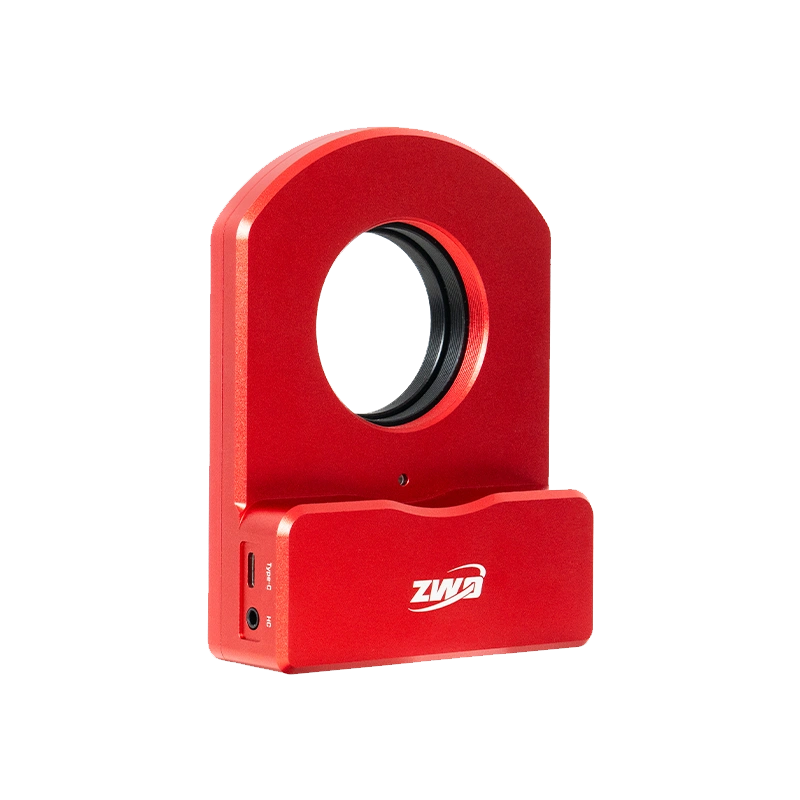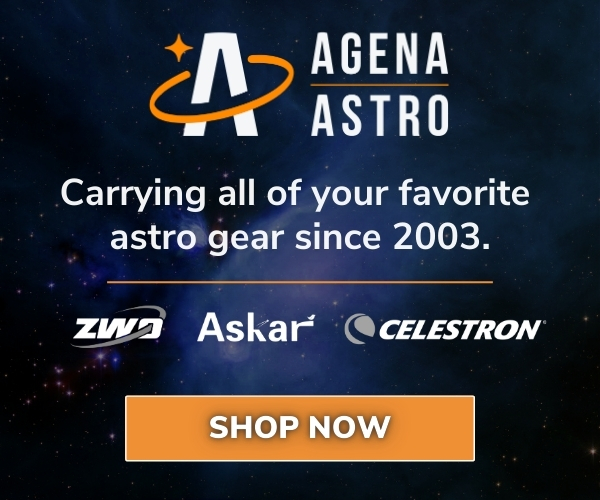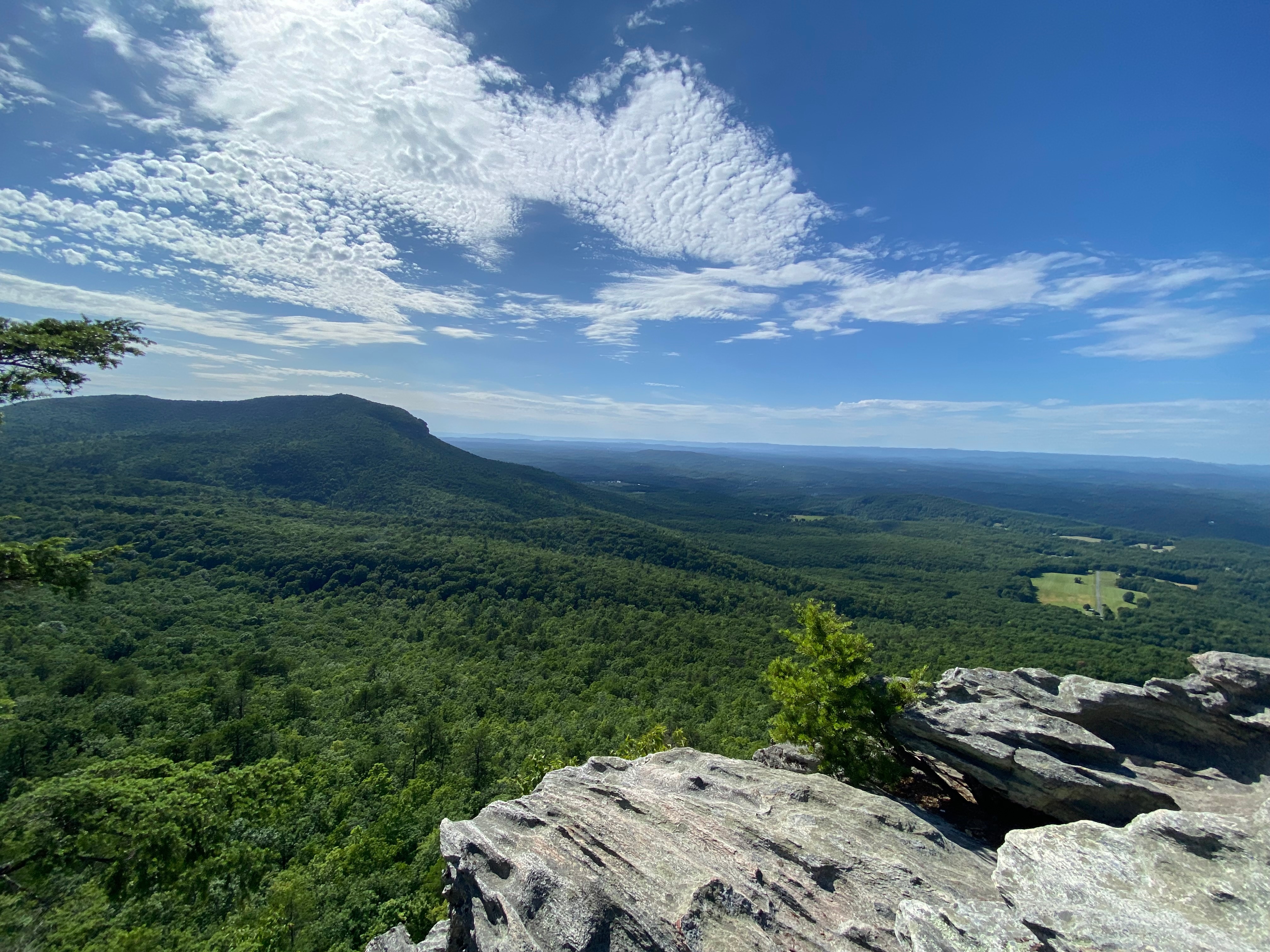Last Updated on September 17, 2025 by Practical Astrophotography Staff
The ZWO Camera Angle Adjuster (CAA), also referred to as an electronic rotator, is a highly anticipated addition to the astrophotography community, designed to simplify and enhance the process of framing celestial objects with precision. Released in late 2024, this compact and lightweight device has quickly garnered attention for its ability to automate camera rotation, offering astrophotographers a seamless way to achieve perfect compositions without the hassle of manual adjustments. In this comprehensive review, I’ll explore the ZWO CAA’s design, features, performance, compatibility, installation process, software integration, real-world usability, and overall value, drawing on available information and user feedback to provide a balanced
perspective.
OVERVIEW: WHAT IS THE ZWO CAA?
The ZWO CAA is an electronic camera rotator designed to adjust the angle of an astrophotography camera with exceptional precision, eliminating the need to manually loosen and rotate the camera or telescope assembly. For astrophotographers, achieving the perfect framing of deep-sky objects, nebulae, or galaxies is critical, but the rectangular or square sensors of cameras often limit compositional flexibility. Rotating the camera to fit a target object or to achieve a desired artistic composition typically involves time-consuming manual adjustments, which can disrupt focus, tracking, or alignment. The ZWO CAA addresses this challenge by offering automated, high-precision rotation with a resolution of 0.02° per step and a positioning accuracy of less than 0.1°.
Weighing just 465 grams (1.02 lbs) and measuring 16.5mm thick, the CAA is a compact and lightweight addition to an imaging train, replacing the standard 16.5mm ZWO adapter. It features a high-efficiency stepper motor for smooth and stable 360° rotation, a single USB-C cable for power and data transfer, and compatibility with ZWO’s ASIAIR ecosystem, ASIStudio, ASCOM-driven software like NINA, and even manual control via a hand controller. With a load capacity of up to 5kg (11 lbs) and a rotation speed of 7.5° per second, the CAA promises to streamline multi-night imaging sessions, reduce cable clutter, and enhance repeatability for consistent framing across sessions.
DESIGN AND BUILD QUALITY
The ZWO CAA is a marvel of compact engineering, designed to integrate seamlessly into an astrophotography setup without adding significant bulk or weight. Its dimensions—136 x 102 x 16.5mm—make it small enough to fit on nearly any telescope configuration, from refractors to reflectors. The body is constructed from high-quality anodized aluminum, which provides durability while keeping the weight down to just 465 grams. This lightweight design is particularly beneficial for astrophotographers using portable setups or mounts with limited payload capacity. The CAA’s internal structure is robust, with ZWO claiming zero deformation during full 360° rotation, ensuring stable and precise operation even under high loads. The device supports a torque of up to 2.5N·m (approximately 5kg), which is sufficient for most astrophotography setups, including cameras, filter wheels, and offaxis guiders (OAGs). A locking slot allows users to insert a 1.5mm hex wrench to secure connections or assist in removing jammed adapters, adding a practical touch for field use. The inclusion of a Type-C interface for power and data transmission, along with an HC interface for a hand controller, further enhances its versatility. One of the standout design features is the simplified cable management. By using a single USB-C cable for both power and control, the CAA reduces the risk of cable snags and minimizes clutter, a common pain point in astrophotography setups with multiple accessories. The 48mm clear Aperture" target="blank">Aperture supports cameras with sensors up to full-frame size, making it compatible with popular ZWO models like the ASI2600MC Duo and ASI2600AIR, as well as other brands with M48 or M54 threads.
FEATURES AND SPECIFICATIONS
The ZWO CAA is packed with features that cater to both novice and advanced astrophotographers. Below are the key specifications and functionalities:
- High Precision Rotation: The CAA offers a rotational accuracy of 0.02° per step, with an overall positioning accuracy of less than 0.1°. This level of precision allows for exact framing and repeatable orientations, critical for multi-night imaging projects. • Fast Rotation Speed: With a maximum speed of 7.5° per
second, the CAA can complete a full 360° rotation in under 48 seconds, minimizing wait times during setup or target changes. • Compact and Lightweight: At 16.5mm thick and 465 grams, the CAA replaces the standard ZWO adapter without adding significant backfocus or weight. - High Load Capacity: Supports up to 5kg (11 lbs) of payload, suitable for complex setups with cameras, filter wheels, and OAGs.
- Simplified Connectivity: A single USB-C port handles power and data, with an additional 3.5mm HC port for manual control via ZWO’s EAF hand controller (sold separately).
- Software Compatibility: Integrates with ZWO’s ASIAIR app, ASIStudio, and ASCOM-compatible software like NINA, allowing remote and automated control.
- M54/M48 Compatibility: Includes adapters for M54 and M48 threads, supporting a wide range of telescopes and cameras.
- Locking Mechanism: A hex wrench slot ensures secure connections and easy removal of tight adapters. These features make the CAA a versatile tool for
astrophotographers seeking to automate their workflow and achieve consistent, high-quality results.
INSTALLATION AND SETUP
Installing the ZWO CAA is straightforward, particularly for users
with ZWO-based setups. The device is designed to slot into the
imaging train between the telescope and camera, replacing the
standard 16.5mm ZWO adapter. For telescopes with M54 threads
and ZWO cameras like the ASI2600MC Duo or AIR, no additional
spacers or adapters are typically required. The process involves
threading the CAA onto the telescope’s focuser or corrective
element, attaching the included M54 or M48 adapter plate, and
securing the camera.
For setups with non-ZWO equipment or different thread
standards, additional adapters may be needed. For example,
users with APS-C-sized cameras may require an M54-to-M48
adapter, while those with field flatteners or reducers might need
custom spacers to maintain proper backfocus. ZWO provides
clear instructions and compatibility guides, such as the “Confirmed
System Builds” on their website, to help users configure their setups.
One potential challenge is ensuring proper backfocus, especially
for users with filter wheels or OAGs. The CAA’s 16.5mm thickness
is designed to match standard ZWO spacers, but advanced users
incorporating reducers or flatteners may need to experiment with
additional spacers to achieve optimal focus. ZWO recommends
caution when using the CAA before a reducer/flattener, as the 4kg
load limit and 48mm clear aperture may restrict performance with
larger sensors or heavy setups.
During initial setup, some users reported issues with the CAA
not rotating due to overly tightened connections. Loosening and
re-securing the camera typically resolves this, but it highlights the
importance of careful installation. Once properly installed, the
CAA’s locking mechanism and robust build ensure a secure fit, even
during long imaging sessions.
SOFTWARE INTEGRATION AND CONTROL
The ZWO CAA shines in its software integration, particularly for
users within the ZWO ecosystem. The ASIAIR app makes controlling
the CAA intuitive, allowing users to set specific rotation angles, save
presets for multi-night projects, and automate framing with platesolving.
This is a game-changer for ASIAIR users, as it enables precise,
repeatable camera orientations without manual intervention.
For those using desktop software, the CAA is compatible
with ASIStudio and ASCOM-driven platforms like NINA,
offering flexibility for Windows-based setups. The ASCOM
compatibility ensures seamless integration with a wide range of
astrophotography software, making the CAA accessible to users
with diverse setups. Manual control is also possible via ZWO’s EAF
hand controller, providing a tactile option for those who prefer
hands-on adjustments.
One notable feature is the CAA’s ability to reverse rotation
direction when reaching 0° or 180°, preventing cable tangling
or damage. This thoughtful design enhances reliability during
automated sessions. However, users have reported a quirk
during meridian flips, where the CAA may rotate the camera
180°, necessitating new Flat Frames to account for the changed
orientation. This can be mitigated by taking flats at each
rotation angle or cropping images into circular frames, but it’s a
consideration for planning imaging runs.
PERFORMANCE IN THE FIELD
In real-world use, the ZWO CAA delivers on its promise of smooth,
precise, and quiet rotation. Users report that the high-efficiency
stepper motor operates flawlessly, even with heavy payloads like
a DSLR with additional weights (up to 4kg in one test). The 0.02°
per step accuracy ensures exact framing, making it easy to recreate
compositions across multiple nights. The fast rotation speed
(7.5°/s) allows users to quickly adjust angles and start imaging,
saving valuable time under clear skies.
The CAA’s performance is particularly impressive for multitarget
sessions. By programming rotation angles in the ASIAIR
app or NINA, users can switch between targets without manual
adjustments, maximizing light-gathering time—an especially
valuable feature in regions with limited clear nights, like the United
Kingdom. The device’s ability to recall previous orientations with
high accuracy ensures consistent framing, reducing the need for
extensive post-processing.
However, there are some limitations. The 4kg load capacity may
be restrictive for advanced setups with large filter wheels, heavy
cameras, and multiple accessories. Users with such configurations
should verify compatibility and consider placing the CAA after the
reducer/flattener to minimize load. Additionally, the need for new flat
frames after meridian flips or significant rotations can add complexity
to the workflow, though this is a common challenge with rotators.
PROS AND CONS
Pros:
• High Precision: 0.02°/step accuracy and <0.1° positioning error
for exact framing.
• Compact and Lightweight: 465g and 16.5mm thick, ideal for
portable setups.
Fast Rotation: 7.5°/s speed minimizes wait times.
• Simplified Cable Management: Single USB-C cable reduces
clutter.
• Broad Compatibility: Works with ASIAIR, ASIStudio, ASCOM,
and manual control.
• Robust Build: Anodized aluminum with zero deformation during
rotation.
• Repeatable Framing: Perfect for multi-night projects and
automation.
Cons:
• Load Capacity Limit: 4kg (or 5kg per some sources) may restrict
heavy setups.
• Meridian Flip Issue: May require new flat frames after 180°
rotations.
• Price: At $299, it’s a premium accessory that may feel costly for
casual users.
• Backfocus Challenges: Advanced setups may need additional
spacers or adapters.
• Initial Setup Learning Curve: Tightened connections can cause
rotation issues if not installed carefully.
VALUE AND PRICING
Priced at $299, the ZWO CAA is a premium accessory that may
initially seem expensive for what appears to be a niche tool.
However, its value becomes apparent when considering the
time saved, the precision offered, and the automation it enables.
For serious astrophotographers, particularly those using ZWO’s
ASIAIR ecosystem, the CAA is a worthwhile investment that
streamlines workflows and enhances image quality by ensuring
optimal framing.
Compared to other electronic rotators, the CAA’s compact
design, high precision, and seamless integration with ZWO
software give it a competitive edge. Manual rotators are cheaper
but lack the automation and accuracy of the CAA, while higherend
rotators from brands like Optec may offer similar precision
but at a significantly higher cost and with greater bulk. For ASIAIR
users or those with ZWO cameras, the CAA’s plug-and-play
compatibility makes it a no-brainer.
WHO SHOULD BUY THE ZWO CAA?
The ZWO CAA is ideal for:
• ZWO Ecosystem Users: Those with ASIAIR, ZWO cameras, or
other ZWO accessories will benefit from seamless integration.
• Multi-Night Imagers: Astrophotographers working on long-term
projects requiring consistent framing.
• Automation Enthusiasts: Users who prioritize remote control
and automated workflows.
• Precision Seekers: Anyone frustrated by manual rotation’s
limitations and seeking high accuracy.
It may not be suitable for:
• Casual Astrophotographers: Those who don’t need precise
framing or automation may find the price unjustified.
• Heavy Setup Users: Configurations exceeding 4-5kg may push
the CAA’s limits.
• Budget-Conscious Buyers: Manual rotators or simpler setups
may suffice for cost-conscious users.
CONCLUSION
The ZWO CAA Camera Angle Adjuster is a game-changer for
astrophotographers seeking precision, automation, and ease of
use. Its compact design, high-precision rotation, fast operation, and
robust software integration make it a standout accessory in the
ZWO lineup. While the $299 price tag and occasional workflow
quirks (like meridian flip flat frame requirements) may deter some,
the CAA’s ability to streamline framing, enhance repeatability,
and reduce manual adjustments is invaluable for serious imagers,
particularly within the ZWO ecosystem.
In my assessment, the CAA lives up to its hype as a longawaited
solution for automated camera rotation. Whether you’re
capturing the intricate details of a nebula or framing a galaxy
cluster across multiple nights, the ZWO CAA delivers the tools to
bring your vision to life with unparalleled accuracy and efficiency.
For astrophotographers ready to elevate their craft, the CAA is a
worthy addition to the imaging train, promising to make every clear
night more productive and enjoyable. +






